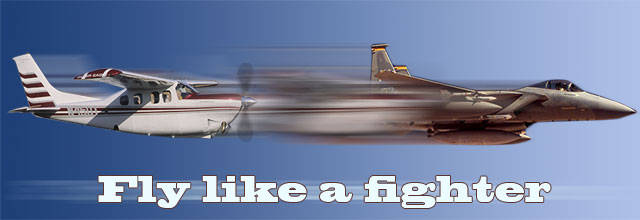
The F-15 can burn through an amazing amount of fuel in a short amount of time. In the dense air at sea level with maximum afterburner selected and at high speed, the total fuel flow can be more than 23,000 gallons per hour, or 385 gallons per minute. At this rate you would burn through your entire internal fuel load in about 6 minutes. At higher altitudes the fuel burn is not as extreme but you can easily find yourself below normal recovery fuel if you are not careful.
During one training mission from the small island of Okinawa I was flying in a four-ship of F-15s where we split up two vs. two in the area for our training. I was the first to reach bingo fuel, so I called for the fight to end and announced my fuel state. The flight lead then called for everyone to rejoin on him and he started heading home, turning away from me and pointing toward home base. At this point I was 5 miles away from the other three F-15s, who were flying at 400 knots directly away from me. Trying to catch them with military power (full power without afterburner), I realized I was now well below recovery fuel. So I called minimum fuel and told my flight lead that I was initiating my own minimum fuel recovery. Flying over the Pacific Ocean, diverting to a closer base was not an option.

Jet engines are most efficient in cold air, which means high altitude. Still in military power, I initiated a climb at 0.9 Mach up to Flight Level 410. This was a bit unnerving because my fuel burned off at a high rate during the climb. Fortunately I had practiced this scenario a few times in the simulator and knew to expect this. Once level at FL410 I pulled the power way back to maximum range cruise, and then did a descent with idle power all the way back to pattern altitude. The fuel gauges barely decreased during the descent and I was able to land without incident.
Transitioning to piston airplanes, it took me a while to realize that maximum range and endurance airspeeds for jets and props are different. In a piston-powered propeller airplane, maximum range is flown at L/D (max), or best glide speed, and maximum endurance is flown at approximately L/D (max) divided by 1.3. This speed is on the back side of the thrust required (drag) curve and is often below final approach airspeed. In my mind, this puts you too close to stall speed in a situation that is probably already busy, so I would recommend flying best glide speed for both maximum endurance and maximum range. As for the altitude to fly, your best endurance is at sea level, and headwinds/tailwinds are probably your biggest consideration for range since specific fuel consumption (SFC) doesn’t change much with altitude.
What’s the bottom line? Be prepared with options for landing in low fuel situations, including holding, diverting, and even doing an off-airport landing with power before you run out of gas. A little aerodynamics knowledge, and proper mixture leaning, will go a long way in getting you back on the ground safely.
Larry Brown of Colorado Springs, Colo., is a retired Air Force F-15 pilot who is using the lessons he learned as a fighter pilot as a GA pilot in his Cessna P210. Brown, who has 2,600 hours total time during his 32 years of flying, also was an instructor pilot and flight examiner in the Air Force T-38 and instructor pilot in the T-52, the military’s version of GA’s Diamond DA40. See previous installments of “Fly like a fighter.”



